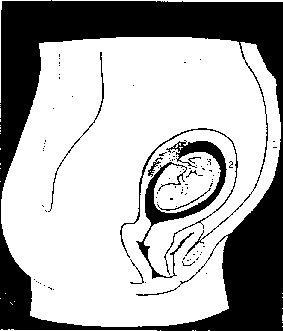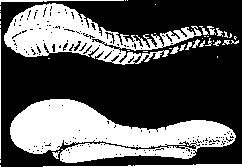Many
thanks to Dr.Jamal Badawi who have brought this article to us.
From: The Journal of the Islamic Medical Association, Vol.18, Jan-June
1986, pp.15-16
A Scientist's Interpretation of References to Embryology in the Qur'an
Keith L. Moore, Ph.D., F.I.A.C.
The Department of Anatomy, University of Toronto, Canada.
Address all correspondence to:
Keith L. Moore, Ph.D, F.I.A.C., Professor of Anatomy
and Associate Dean Basic Sciences, Faculty of Medicine, University of Toronto,
Toronto, Ontario M55 IAB, Canada
Statements referring to human reproduction and development are scattered
throughout the Qur'an. It is only recently that the scientific meaning
of some of these verses has been appreciated fully. The long delay in interpreting
these verses correctly resulted mainly from inaccurate translations and
commentaries and from a lack of awareness of scientific knowledge.
Interest in explanations of the verses of the Qur'an is not new. People
used to ask the prophet Muhammad all sorts of questions about the
meaning of verses referring to human reproduction. The Apostle's answers
form the basis of the Hadith literature.
The translations(*) of the verses from the Qur'an
which are interpreted in this paper were provided by Sheik Abdul Majid
Zendani, a Professor of Islamic Studies in King Abdulaziz University
in Jeddah, Saudi Arabia.
-
"He makes you in the wombs of your mothers in stages, one after another,
in three veils of darkness."
This statement is from Sura
39:6. We do not know when it was realized that human beings underwent
development in the uterus (womb), but the first known illustration of a
fetus in the uterus was drawn by Leonardo da Vinci in the 15th century.
In the 2nd century A.D., Galen described the placenta and fetal
membranes in his book "On The Formation of the Foetus." Consequently,
doctors in the 7th century A.D. likely knew that the human embryo developed
in the uterus. It is unlikely that they knew that it developed in stages,
even though Aristotle had described the stages of development of
the chick embryo in the 4th century B.C. The realization that the human
embryo develops in stages was not discussed and illustrated until the 15th
century.
After the microscope was discovered in the 17th century by Leeuwenhoek
descriptions were made of the early stages of the chick embryo. The staging
of human embryos was not described until the 20th century. Streeter
(1941) developed the first system of staging which has now been replaced
by a more accurate system proposed by O'Rahilly (1972).
"The three veils of darkness" may refer to: (l) the anterior abdominal
wall; (2) the uterine wall; and (3) the amniochorionic membrane (Fig. 1).
Although there are other interpretations of this statement, the one presented
here seems the most logical from an embryological point of view.
 |
Figure 1. Drawing of a sagittal
section of a female's abdomen and pelvis showing a fetus in utero. The
"veils of darkness" are: (1) the anterior abdominal wall; (2) the uterine
wall, and (3) the amniochorionic membrane. |
-
"Then We placed him as a drop in a place of rest."
-
This statement is from Sura
23:13. The drop or nutfah has been interpreted as the sperm
or spermatozoon, but a more meaningful interpretation would be the zygote
which divides to form a blastocyst which is implanted in the uterus ("a
place of rest"). This interpretation is supported by another verse in the
Qur'an which states that "a human being is created from a mixed drop."
The zygote forms by the union of a mixture of the sperm and the ovum ("The
mixed drop").
-
"Then We made the drop into a leech-like structure."
-
This statement is from Sura
23:14. The word "alaqah" refers to a leech or bloodsucker. This
is an appropriate description of the human embryo from days 7-24 when it
clings to the endometrium of the uterus, in the same way that a leech clings
to the skin. Just as the leech derives blood from the host, the human embryo
derives blood from the decidua or pregnant endometrium. It is remarkable
how much the embryo of 23-24 days resembles a leech (Fig. 2). As there
were no microscopes or lenses available in the 7th century, doctors would
not have known that the human embryo had this leech-like appearance. In
the early part of the fourth week, the embryo is just visible to the unaided
eye because it is smaller than a kernel of wheat.
 |
Figure 2. Top, a drawing of a
leech or bloodsucker.
Below, a drawing of a 24 day-old human embryo. Note the leech-like
appearance of the human embryo at this stage. |
 |
Figure 3. Left, a plasticine
model of the human embryo which has the appearance of chewed flesh.
Right, a drawing of a 28 day-old human embryo showing several bead-like
somites which resemble the teeth marks in the model shown to the left. |
-
"Then of that leech-like structure, We made a chewed lump."
-
This statement is also from Sura
23:14. The Arabic word "mudghah" means "chewed substance or
chewed lump." Toward the end of the fourth week, the human embryo looks
somewhat like a chewed lump of flesh (Fig. 3). The chewed appearance results
from the somites which resemble teeth marks. The somites represent the
beginnings or primordia of the vertebrae.
-
"Then We made out of the chewed lump, bones, and clothed the bones in flesh."
-
-
This continuation of Sura
23:14 indicates that out of the chewed lump stage, bones and muscles
form. This is in accordance with embryological development. First the bones
form as cartilage models and then the muscles (flesh) develop around them
from the somatic mesoderm.
-
"Then We developed out of it another creature."
-
This next part of Sura
23:14 implies that the bones and muscles result in the formation of
another creature. This may refer to the human-like embryo that forms by
the end of the eighth week. At this stage it has distinctive human characteristics
and possesses the primordia of all the internal and external organs and
parts. After the eighth week, the human embryo is called a fetus. This
may be the new creature to which the verse refers.
-
"And He gave you hearing and sight and feeling and understanding."
-
This part of Sura
32:9 indicates that the special senses of hearing, seeing, and feeling
develop in this order, which is true. The primordia of the internal ears
appear before the beginning of the eyes, and the brain (the site of understanding)
differentiates last.
-
"Then out of a piece of chewed flesh, partly formed and partly unformed."
-
This part of Sura
22:5 seems to indicate that the embryo is composed of both differentiated
and undifferentiated tissues. For example, when the cartilage bones are
differentiated, the embryonic connective tissue or mesenchyme around them
is undifferentiated. It later differentiates into the muscles and ligaments
attached to the bones.
-
"And We cause whom We will to rest in the wombs for an appointed term."
-
This next part of Sura
22:5 seems to imply that God determines which embryos will remain in
the uterus until full term. It is well known that many embryos abort during
the first month of development, and that only about 30% of zygotes that
form, develop into fetuses that survive until birth. This verse has also
been interpreted to mean that God determines whether the embryo will develop
into a boy or girl.
-
-
The interpretation of the verses in the Qur'an referring to human development
would not have been possible in the 7th century A.D., or even a hundred
years ago. We can interpret them now because the science of modern Embryology
affords us new understanding. Undoubtedly there are other verses in the
Qur'an related to human development that will be understood in the future
as our knowledge increases.
-
(*) Even though the translations of the
verses of the Qur'an in the above paper were provided by Sheik Abdul
Majid Zendani, the links to the translations in this page are from
Yusuf Ali Qur'an Translation (http://qibla.msa.upenn.edu/alim_online/yali_trans/yasurahl.htm)
presented by the Alim
Online since Sheik Zendani's translation is not available on
the internet. (MSA-UTK)
-
Please Email your comments to yusuf@maxinet.com
-
Click here to go back
to home page
-



